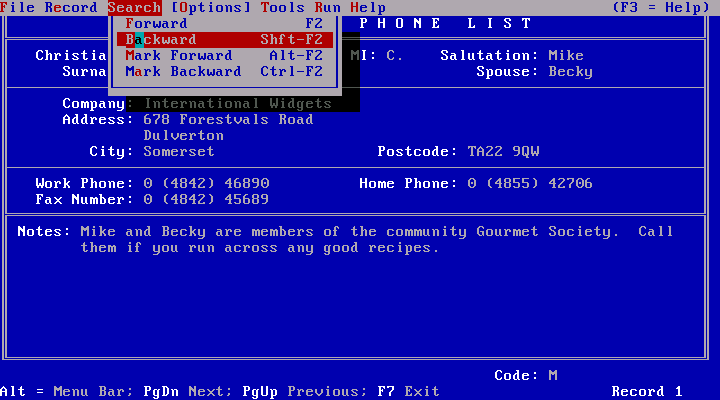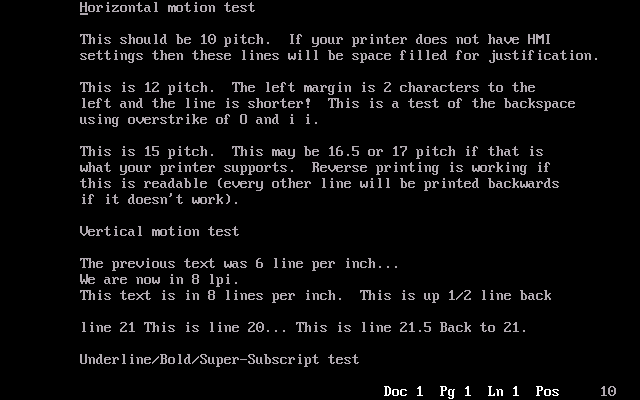
This plethora of keystroke possibilities, combined with the developers' wish to keep the user interface free of 'clutter' such as on-screen menus, made it necessary for most users to use a keyboard template showing each function. With the 1981 PC keyboard, the and the related F4 ( Indent) functions were adjacent. This was translated to the layout of the 1981, with two columns of function keys at the left end of the keyboard, but worked even better with the 1984 PC with three groups of four function keys across the top of the keyboard. Macro languages WordPerfect for DOS stood out for its, in which sequences of keystrokes, including function codes, were recorded as the user typed them. WordPerfect had this feature already in its DOS incarnations: it could be brought forward by pressing Alt+ F3.

Because of their style dependencies, efforts to create the equivalent of Reveal Codes in other word processors produced dissimilar results. Clicking on a style token brings up the style editor with the particular style type displayed. The scheme provides a more detailed view to troubleshoot problems than with styles-based word processors, and object tokens can be clicked with a pointing device to directly open the configuration editor for the particular object type, e.g. The codes for formatting and locating text are displayed, interspersed with tags and the occasional objects, with the tags and objects represented by named tokens. It was especially beloved of those who were faced with, which had at the time no similar feature. Key characteristics WordPerfect's distinguishing features include. The previous text-based versions used different colors or text color inversions to indicate various markups, and (starting with version 5.0) used a graphic mode only for an uneditable print preview that used generic fonts rather than the actual fonts that appeared on the printed page. Unlike previous DOS versions, WordPerfect 6.0 for DOS (released in 1993) could switch between its traditional text-based editing mode and a graphical editing mode that showed the document as it would print out known as (What You See Is What You Get), including fonts. This version could read and write WordPerfect 6 files, included several 3rd party screen and printing applications (previously sold separately), and provided several minor improvements.

To allow older DOS-based PCs to utilize the new WordPerfect 6 file format, WordPerfect 5.1+ for DOS was introduced.

All word processors could read (and convert) that formatand many conferences and magazines insisted that people ship their documents in 5.1 format.


 0 kommentar(er)
0 kommentar(er)
